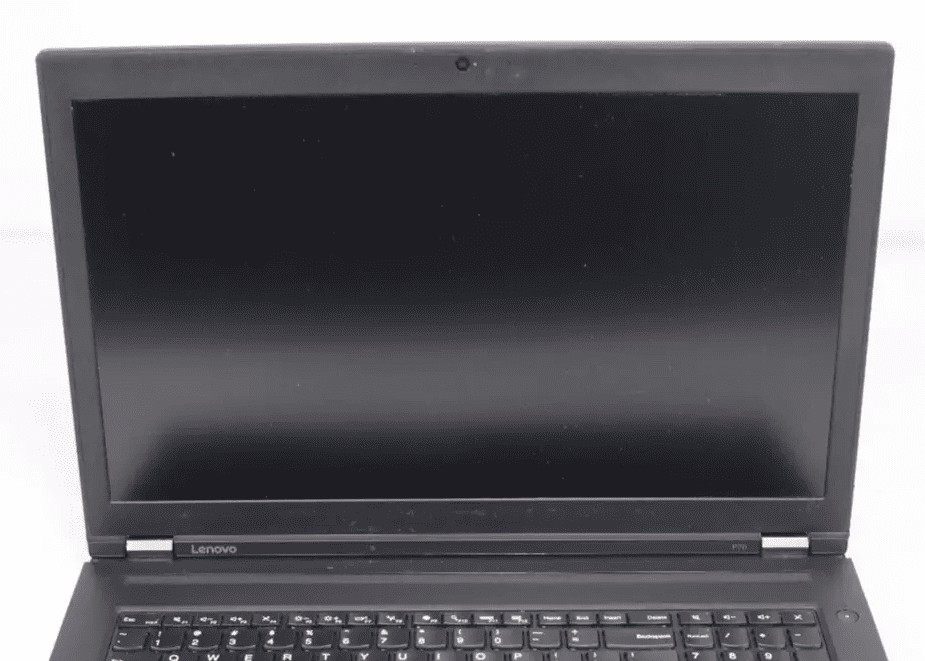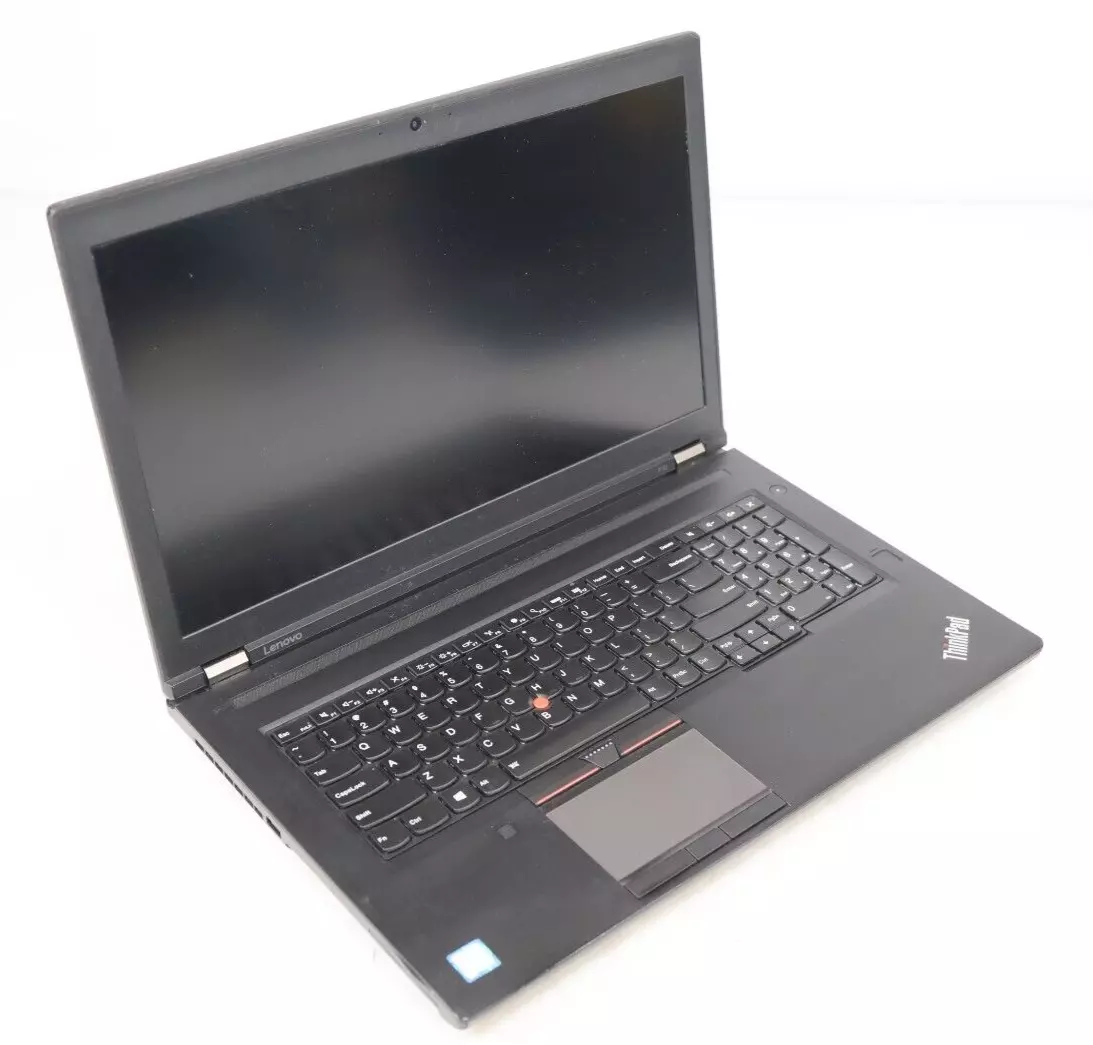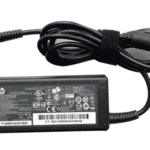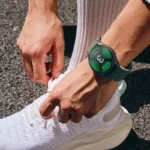Dealing with a black screen on your Lenovo laptop can be frustrating. The screen stays dark even though the power is on, leaving you unable to use your computer. You can often fix a black screen by pressing Windows+Ctrl+Shift+B to restart the graphics driver, checking cable connections, or performing a hard reset by holding the power button for 60 seconds.
Many Lenovo users face this issue after their laptop wakes from sleep or hibernate mode. The problem might stem from loose connections, outdated drivers, or system glitches. Simple fixes like reconnecting external displays or updating graphics drivers can solve the problem without needing technical help.
Before panicking about data loss or expensive repairs, try the basic troubleshooting steps. Disconnect power, remove external devices, and hold the power button for a full minute. This reset often works wonders for fixing temporary system issues that cause black screens.
Step-by-Step Fixes for a Lenovo Laptop Black Screen
If your Lenovo laptop powers on but the screen stays black, don’t panic—there are several possible causes, and most can be addressed without opening the device. Use the following checklist to troubleshoot the problem efficiently.

1. Perform a Hard Reset
This basic step can resolve many temporary hardware glitches.
Instructions:
- Power off the laptop completely.
- Disconnect all external devices (USBs, docks, power cables).
- Hold the power button for 30 seconds to drain residual power.
- Plug the power adapter back in and try turning it on again.
If the screen remains black, continue to the next steps.
2. Check Display Brightness and External Monitor
Sometimes the screen is actually working but the brightness is turned all the way down or the laptop is set to use an external display.
Checklist:
- Press
Fn + F5orWindows + Pto toggle display modes. - Connect your laptop to an external monitor via HDMI or DisplayPort.
- If the external display works, the issue is likely with your laptop’s screen or internal display connector.
- Adjust screen brightness using the keyboard shortcuts (
Fn + ↑orFn + ↓).
3. Boot into Safe Mode
If your display works during boot but goes black afterward, Windows may be loading improperly.
Boot to Safe Mode:
| Step | Action |
|---|---|
| 1 | Power off the laptop |
| 2 | Turn it on and immediately press F8 or Shift + F8 repeatedly |
| 3 | Choose Safe Mode with Networking from the boot options menu |
| 4 | If the screen works, update or roll back your display driver |
4. Update or Roll Back Graphics Drivers
A corrupted or incompatible display driver is a common cause of a black screen.
How to update:
- Right-click the Start button > select Device Manager.
- Expand Display adapters.
- Right-click your GPU (Intel UHD, NVIDIA, AMD, etc.) > Update driver.
If the problem started after a driver update:
- Use Roll Back Driver under the same menu.
- Or uninstall the driver completely, then reboot and let Windows reinstall it.
5. Perform a BIOS or UEFI Reset
Your BIOS settings may have been altered, affecting how the screen initializes.
Steps to reset BIOS:
- Turn off the laptop.
- Press the Novo button (a small recessed button near the power port on many Lenovo models).
- Choose BIOS Setup from the menu.
- Once in BIOS, press F9 to load defaults, then F10 to save and exit.
If your laptop doesn’t have a Novo button, try pressing F1, F2, or Delete repeatedly as it boots.
6. Reseat the RAM (If Comfortable)
Loose RAM can sometimes prevent the system from initializing the display.
To reseat RAM:
| Requirement | Description |
|---|---|
| Tools | Small screwdriver, anti-static wristband |
| Process | Power off, remove battery (if removable), open back panel, carefully remove RAM, reinsert firmly |
Only do this if you’re comfortable opening up the laptop. If not, skip to the professional repair option.
7. Lenovo Specific Fix: Use the Emergency Reset Hole
Many Lenovo models include a pinhole reset button.
- Use a paperclip to press and hold the Emergency Reset Hole for 10 seconds (often labeled near the bottom or on the side of the laptop).
- Reconnect power and try starting it again.
8. When to Consider Hardware Failure
If none of the above worked, your black screen may be caused by:
| Possible Hardware Issue | Description |
|---|---|
| Faulty backlight or display | Screen turns on but stays dark or dim |
| Damaged display cable | Especially after a drop or impact |
| Failing GPU or motherboard | Typically after overheating |
At this point, visiting a repair technician or Lenovo support center is recommended. Many models are still covered by Lenovo’s standard warranty, especially if you’ve owned the device for under a year. Use Lenovo’s Warranty Lookup Tool to confirm your status.
Key Takeaways
- Press Windows+Ctrl+Shift+B to quickly refresh the display connection when facing a black screen.
- Perform a hard reset by powering off, disconnecting cables, and holding the power button for 60 seconds.
- Check and update graphics drivers regularly to prevent black screen issues on Lenovo laptops.
Understanding the Black Screen Issue
A black screen on your Lenovo laptop can be alarming but is often fixable. This common problem has several potential causes ranging from simple software glitches to more serious hardware failures.
Common Causes of Black Screen Errors
Power-related issues are frequent culprits. Your laptop might have a dead battery or faulty power adapter. Sometimes the problem stems from incorrect power settings, particularly Fast Startup options that can cause display problems when waking from sleep.
Software problems often trigger black screens. These include:
- Outdated or corrupt graphics drivers
- Windows update errors
- Third-party application conflicts
Hardware failures can also cause black screens. The most common include:
- GPU (graphics card) failures
- Loose or damaged display cables
- Failed screen components
- Motherboard issues
Many Lenovo ThinkPad black screen problems specifically relate to graphics switching between integrated and dedicated GPUs. This happens most often after sleep or hibernate modes.
Symptoms of Lenovo Black Screen Problems
You can identify different types of black screen problems by watching for specific signs. If your laptop powers on (fans running, lights on) but shows no display, the issue likely involves the display system rather than the entire computer.
Timing matters too. Black screens that appear:
- During startup suggest boot or BIOS problems
- After suspend/hibernate point to power management issues
- During normal operation might indicate overheating or GPU failure
Listen for beep codes when your Lenovo starts. These sound patterns can help diagnose hardware failures causing black screens.
Watch for partial displays. Some black screen issues show:
- Visible cursor only
- Backlight on but no image
- Flickering before going dark
The screen might also respond to keyboard shortcuts like Fn+F7 (display toggle) in some cases, suggesting software rather than hardware problems.
Initial Troubleshooting Steps
When facing a black screen on your Lenovo laptop, you can try several simple fixes before seeking professional help. These steps often solve the problem without requiring technical skills or special tools.
Power Cycle the Lenovo Laptop
Start by completely shutting down your laptop. Unplug the power adapter and remove the battery if possible. This step ensures all power is drained from the system components.
Press and hold the power button for about 20-30 seconds. This releases any remaining electrical charge in the laptop’s components. The discharge can reset minor system glitches causing the black screen.
After waiting about a minute, reconnect the power adapter but leave the battery out if you removed it. Try turning on the laptop. If it works, shut it down properly and reinsert the battery.
If the black screen persists, try the keyboard shortcut Windows + Shift + Ctrl + B simultaneously. This command refreshes the graphics driver and might restore your display.
Check Peripheral Devices
External devices connected to your laptop can sometimes interfere with normal startup. Disconnect all USB devices, external drives, printers, and docking stations.
Remove any memory cards from card readers and disconnect external displays. Even a connected mouse or keyboard could potentially cause startup problems.
After removing all peripherals, try starting the laptop again. If it boots normally with a working display, reconnect devices one at a time to identify which might be causing the issue.
Sometimes the problem occurs when certain devices are connected during startup. Try a different startup sequence – power on the laptop first, then connect peripherals after Windows has loaded completely.
Connect to an External Monitor
Testing with an external monitor helps determine if the problem is with your laptop’s screen or with the system itself. Connect your laptop to a TV or monitor using an HDMI or VGA cable.
Press the Windows key + P to access display settings and switch between display modes. Try “Duplicate” or “Second screen only” options to see if an image appears on the external screen.
If you see an image on the external display, your laptop’s system is working, but there might be an issue with the internal screen, its connection cable, or the graphics settings.
No display on the external monitor could indicate a more serious problem with your graphics card or motherboard. In this case, your laptop likely needs professional repair service.
Advanced Diagnostic Techniques
When basic troubleshooting steps fail to fix your black screen issue, more advanced methods can help identify and solve deeper problems. These techniques can reveal whether the issue is with your display hardware, operating system, or storage drives.
Test the Display
Testing your laptop’s display capabilities can help determine if the screen itself is the problem. First, try the brightness key combinations (usually Fn + arrow keys) to ensure the screen isn’t simply dimmed all the way down.
Connect your Lenovo laptop to an external monitor or TV using an HDMI or VGA cable. If the external display works, your laptop’s screen might be damaged or the display cable inside might be loose.
Press Windows + P to cycle through display options (PC screen only, duplicate, extend, or second screen only). Sometimes this can wake up a black screen.
Hardware Test: Access the Lenovo diagnostic tools by pressing F12 at startup to reach the boot menu, then select diagnostics. This built-in tool can test your display hardware specifically.
Run in Safe Mode
Safe Mode starts Windows with minimal drivers and services, which can help bypass software issues causing black screens.
To enter Safe Mode:
- Press and hold the power button to turn off your laptop
- Turn it on and immediately press F8 repeatedly (or Shift + F8 for newer models)
- Select “Safe Mode” from the boot options menu
If your screen works in Safe Mode, the issue might be with a driver or program that loads during normal startup. Try updating your graphics drivers from the Device Manager while in Safe Mode.
You can also use Safe Mode to uninstall recently added software or updates that might be causing conflicts. Check for any changes you made before the black screen appeared.
Utilize System Restore
System Restore can revert your computer to a previous working state without affecting your personal files.
To use System Restore:
- Boot into Safe Mode if your screen is black
- Search for “System Restore” in the Start menu
- Select a restore point from before your black screen issues began
System Restore works by reverting system files and settings, including drivers and registry values, to an earlier state. This can fix black screen issues caused by recent software changes or updates.
If you can’t access Windows at all, try entering the Advanced Startup Options by pressing F11 during boot or by using a recovery drive. From there, select “Troubleshoot” > “Advanced options” > “System Restore.”
Check for Disk Errors
Corrupted system files or disk errors can sometimes cause display problems on Lenovo laptops.
Run the CHKDSK utility to scan for and fix disk errors:
- Boot into Safe Mode if possible
- Open Command Prompt as Administrator
- Type
chkdsk C: /f /rand press Enter - Restart your computer after the scan completes
The /f flag fixes errors and /r locates bad sectors and recovers readable information. This process might take some time to complete.
You can also run the System File Checker by typing sfc /scannow in the Command Prompt. This tool searches for corrupted Windows system files and attempts to repair them automatically.
If disk errors are severe, consider backing up your important files and running Lenovo’s hardware diagnostics to check if your hard drive is failing.
Windows 10 Specific Solutions
Windows 10 offers several built-in tools and features to fix black screen issues on Lenovo laptops. These solutions address common causes like graphics driver problems, system file corruption, and power management settings.
Disable Fast Startup Feature
Fast Startup in Windows 10 can sometimes cause black screen problems on Lenovo laptops. This feature keeps some system files loaded to speed up boot times, but it can conflict with certain hardware configurations.
To disable Fast Startup:
- Open Control Panel (search for it in the Start menu)
- Click on “Power Options”
- Select “Choose what the power buttons do” on the left panel
- Click “Change settings that are currently unavailable”
- Uncheck “Turn on fast startup“
- Click “Save changes”
After disabling Fast Startup, restart your Lenovo laptop to see if the black screen issue is resolved. Many users report this simple fix works because it forces Windows to fully reinitialize all drivers during startup rather than using cached versions.
Restart Explorer.exe Process
The Windows Explorer process manages the desktop environment. When it crashes or freezes, your screen might go black while the computer continues running. Restarting this process often fixes display issues without a full system reboot.
If you can access Task Manager (press Ctrl+Alt+Delete):
- Select “Task Manager”
- Go to the “Processes” tab
- Find “Windows Explorer” (or Explorer.exe)
- Right-click it and select “End task”
- Click “File” > “Run new task”
- Type “explorer.exe” and press Enter
You can also try the keyboard shortcut Win+Ctrl+Shift+B to restart your graphics driver instantly. This combination tells Windows to reset the video driver without affecting other running programs. The screen may flicker briefly before returning to normal.
Perform a Windows 10 RMA
RMA (Reset, Maintenance, Advanced startup) is a systematic approach to fixing persistent black screen issues in Windows 10. This process works through increasingly complex system repair options.
Reset steps:
- Press Windows key + R, type “powershell”, and run as administrator
- Type “sfc /scannow” to repair system files
- After completion, run “DISM /Online /Cleanup-Image /RestoreHealth”
Maintenance steps:
- Update graphics drivers through Device Manager
- Install all pending Windows Updates
- Check for overheating (clean vents, use cooling pad)
If problems persist, use Advanced startup options:
- Restart while holding Shift key
- Navigate to Troubleshoot > Advanced options
- Try “Startup Repair” or “System Restore”
As a last resort, perform a full system reset while keeping personal files by going to Settings > Update & Security > Recovery > Reset this PC.
Data Management and Recovery
When facing a black screen on your Lenovo laptop, protecting your data becomes a top priority. The right approach can help you both prevent data loss and recover important files when systems fail.
Prevent Data Loss Scenarios
Regular backups are your best defense against data loss when your Lenovo laptop displays a black screen. Set up automatic backups to external drives or cloud storage services like OneDrive, Google Drive, or Dropbox. This ensures your files remain safe even if your laptop becomes inaccessible.
Create a backup schedule that matches how often you create important documents. Daily backups work best for frequent computer users, while weekly might suffice for casual use.
Enable Windows’ built-in File History feature by connecting an external drive and activating it in Settings. This tool automatically saves versions of your files, allowing you to restore previous versions if needed.
For critical work documents, consider using multiple backup methods simultaneously. This redundancy provides extra protection against data loss scenarios.
Recover Data from a Crashed System
When your Lenovo laptop won’t boot past a black screen, you can still rescue your data. Boot using a recovery USB drive created from another computer with Windows installation media. This lets you access your files without needing your laptop to start normally.
For more serious cases, remove your laptop’s hard drive and connect it to another computer using a SATA-to-USB adapter. This turns your drive into an external storage device, allowing direct file access.
Data recovery software like EaseUS Data Recovery Wizard can help retrieve deleted or corrupted files. These programs can scan drives deeply and recover files even from failing systems.
If you suspect hardware failure caused your black screen, act quickly. The longer a failing drive operates, the less likely you’ll recover your data completely. Professional data recovery services might be needed for critical files in severe cases.
Frequently Asked Questions
Black screen issues on Lenovo laptops can be frustrating but often have simple solutions. Here are answers to common questions about troubleshooting these problems.
Why does my Lenovo laptop display a black screen on startup?
A Lenovo laptop may show a black screen on startup due to several reasons. Software glitches like operating system crashes or driver conflicts often cause this problem. Hardware issues such as a failing display or loose connections could also be responsible.
Power management settings sometimes cause the screen to remain dark. Check if your laptop is actually on by looking for lit power indicators or listen for fan noise.
What steps can I take to resolve a black screen issue on my Lenovo laptop with Windows 10?
Try a hard reset first. Remove the battery (if possible), disconnect the power adapter, then hold the power button for 20-30 seconds. Reconnect everything and try powering on again.
Restart the graphics driver by pressing Win+Ctrl+Shift+B simultaneously. This keyboard shortcut refreshes the display connection and often fixes black screen issues.
Connect your laptop to an external monitor. If the external display works, your screen or display cable might be faulty.
How can I fix a Lenovo laptop that has a black screen but shows a cursor?
When you see a cursor on a black screen, it usually means Windows has loaded but the interface hasn’t. Restart your computer in Safe Mode to troubleshoot.
Check for recently installed programs or updates that might cause conflicts. Uninstalling these can sometimes resolve the issue.
Try running System Restore to return your computer to a previous working state if you can access it through Safe Mode.
What are common causes for a Lenovo laptop to have a black screen of death?
Outdated or corrupted graphics drivers frequently cause black screen issues. Driver conflicts after Windows updates are particularly common.
Hardware problems like RAM issues can trigger black screens. Memory modules that are loose or failing may prevent proper startup.
Overheating can cause protective shutdowns that result in black screens. Check that your laptop’s cooling system is working properly.
Can the black screen of death on a Lenovo laptop be fixed, and if so, how?
Yes, most black screen issues can be fixed. Try removing and reinstalling your RAM modules. This simple step often resolves black screen problems.
Update or reinstall graphics drivers through Safe Mode or from another computer if possible. Outdated drivers are a frequent culprit.
If software solutions fail, hardware components like the display cable or screen might need replacement. Consider professional service if you’re not comfortable with hardware repairs.
What should be done when a Lenovo laptop turns on with a black screen on Windows 11?
For Windows 11 black screen issues, first perform a power cycle. Shut down the laptop, disconnect the power, hold the power button for 1 minute, then reconnect and restart.
Check for Windows 11 compatibility issues. Some older Lenovo models may have problems with the newest operating system requirements.
Boot into Advanced Startup options by force-shutting down your computer during startup three times in a row. Then select Troubleshoot to access recovery options.







